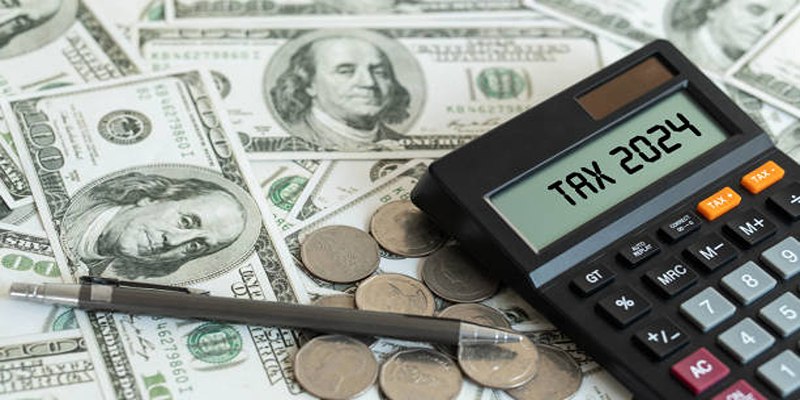Quick Ways to Locate Your Tax Refund and Stimulus Check from 2020
If you're wondering where your tax refund or stimulus check from 2020 is, you're not alone. Many people have faced delays or confusion about their payments. Thankfully, there are quick and easy ways to track down these funds. Whether you're waiting for a much-needed refund or trying to find out what happened to your stimulus money, this guide will help you. Follow along for helpful tips to locate your payments without stress or difficulty.
Use the IRS "Where's My Refund?" Tool

The fastest method to view your tax refund status involves using the IRS "Where's My Refund?" tool. Through this internet-based program users can monitor their refund details and obtain estimated delivery timing information.
Users need to have their Social Security number or Individual Taxpayer Identification Number (ITIN), their filing status and their expected refund amount for using this tool. The refund status can be accessed after you click the submit button following your data entry.
If there are any issues with your refund, such as a delay or error in processing, the tool will also inform you and provide next steps to take. Overall, this is the most efficient way to track your tax refund and get up-to-date information on its status.
Tracking Stimulus Checks with the "Get My Payment" Tool
For stimulus checks, the IRS has created a similar tool called "Get My Payment." This online tool allows you to track the status of your stimulus payment and see when it was sent out or deposited into your account.
To use this tool, you will need to provide your Social Security number or ITIN, date of birth, and mailing address. Once entered, click submit and you will be able to see the status of your payment.
If there are any issues with your stimulus check, such as a delay or error in processing, the tool will also inform you and provide next steps to take. This is a convenient way to stay updated on the status of your economic impact payment.
Checking Tax Filing and Payment Records
If the online tools are not providing you with the information you need, another option is to check your tax filing and payment records. This can be done by accessing your account transcripts through the IRS website or by calling their toll-free number.
Your account transcripts will show any refunds that have been issued to you, as well as any outstanding payments due. If there are discrepancies or missing information, it may be a sign that your refund or stimulus check has encountered an issue and you should follow up with the IRS.
Contacting the IRS for Assistance
If you have exhausted all other options and still cannot locate your tax refund or stimulus check, it may be necessary to contact the IRS directly for assistance. This can be done through their toll-free number or by scheduling an appointment at a local Taxpayer Assistance Center.
When contacting the IRS, make sure to have all relevant information on hand, including your Social Security number or ITIN and any correspondence from the IRS regarding your payments. The representative will then be able to assist you in locating your payments or addressing any issues that may have arisen.
Common Delays and How to Address Them
There are a few common reasons why you may experience delays in receiving your tax refund or stimulus check. Some of these include:
1. Errors on your tax return or payment information
If there are any errors or discrepancies in the information you provided on your tax return, it can delay processing and issuing of your refund. The same goes for stimulus checks, as incorrect banking information or mailing address can cause delays.
To avoid this issue, make sure to double-check all information before submitting your taxes or providing payment details for stimulus checks.
2. Income verification issues
For some taxpayers, additional income verification may be required by the IRS before issuing a refund or stimulus check. This can occur if you have discrepancies between the income reported on your tax return and what was reported to the IRS by employers or other sources.
To address this, make sure to have all relevant income documents on hand and be prepared to provide them if requested by the IRS.
3. Fraud or Identity Theft
Unfortunately, tax refund and stimulus check scams have become common in recent years. If you suspect that your payments have been stolen or fraudulently claimed, it is important to contact the IRS immediately to report the issue and take necessary steps to protect your identity.
Staying Informed for Future Payments

As we continue to navigate through the pandemic and any future economic impact payments, it is important to stay informed about how to track and receive your payments. The IRS website and toll-free number are reliable sources for up-to-date information and resources.
In addition, regularly checking your tax filing and payment records can also help identify any issues or discrepancies early on. By staying proactive, you can ensure a smoother process for receiving your tax refunds and stimulus checks in the future.
Final Thoughts
Ensuring the proper receipt of your tax refunds and stimulus payments requires diligence, awareness, and timely action. By utilizing the resources provided by the IRS and taking the necessary steps to safeguard your personal information, you can minimize the risks of delays or fraud. Remember, staying informed and proactive not only helps you maintain control over your financial matters but also provides peace of mind. Take the time to monitor your records, address discrepancies promptly, and leverage available tools to stay on top of your payments.












